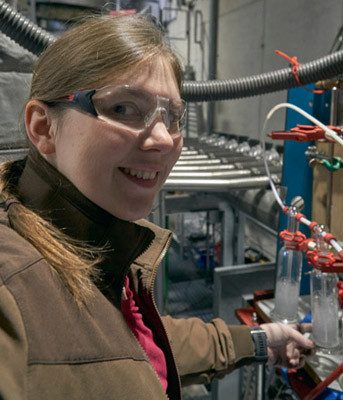News

There are few reliable data for SOFC-affecting producer gas impurities available. Therefore, the investigations focus on developing and validating appropriate gas characterisation methods of raw and clean producer gas. Only with confirmation of those methods it is possible to achieve reliable data for the evaluation of the accounted gas cleaning unit.
In December 2018 the team of BIOENERGY 2020+ took samples at the gasifier of SynCraft, and in February 2019 the gasifier at TU Graz was examined. Different online and offline measurement methods and devices were used at both sites. For online and quasi-online gas analysis the following devices has been employed:
• A heated FTIR-analysing system
• A Micro-GC-System including CP-Sil 5 CB and a PoraPlot U column
• A multi component gas analysing device including an infrared photometric detector (NDIR) and a thermal conductivity detector (TCD)
The FTIR- and Micro-GC-systems aimed the measurement of light hydrocarbon compounds, BTXE&S (benzene, toluene, xylene, ethylene and styrene) and C1-C3. The multicomponent gas analysing device (for permanent gases) was used as an additional insurance of the data quality.
To compare with the online analysis data the team additionally carried out an absorptive offline analysis for H2S, NH3 and tars. The examined tars included high and low molecular weight tars inclusively organic sulphur compounds. Therefore, the existing tar protocol (CEN/TS 15439) was modified as described: Three cooled double jacked impingers with isopropanol as solvent were used in a row at -25°C measured in the last impinger. After the absorptive sampling the liquid samples were filled up in glass bottles waiting to be analysed in the refrigerators of the laboratory.
More News
News


